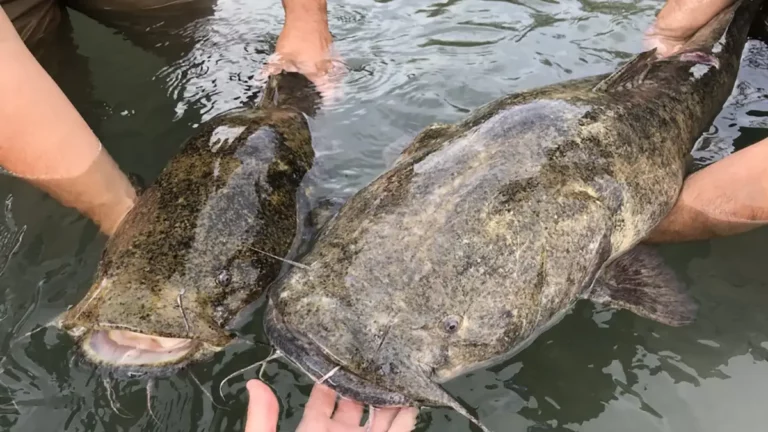The flathead catfish, also known by various names, is a formidable predatory fish that can put up an incredible fight when caught. Belonging to the North American catfish family, they are easily recognizable by their distinctive features, including a noticeable underbite and flattened head. With an elongated and scalesless body, their coloration can vary, making each fish unique.
Once confined to specific river drainages, flathead catfish have expanded well beyond their native range due to purposeful stocking and slow migrations. They prefer deep segments of rivers and larger streams, and their adaptable diet includes crustaceans, fish, and even birds, crabs, and turtles.
Flathead catfish spawn in late spring or early summer, with the male and female working together to create a nest for the eggs. As fierce nocturnal feeders, they have extraordinary vision and can consume prey almost as large as themselves.

Currently, the flathead catfish faces no major threats within its native range, but its introduction in other areas has raised concerns about its impact on native species.
Impressively, the IGFA world record for the flathead catfish stands at 123 pounds, making it the second-largest North American catfish species after the blue catfish. The oldest known flathead catfish reached a remarkable age of 45 years.
In summary, the flathead catfish is an apex predator with remarkable characteristics, making it a captivating species for anglers and researchers alike. As they continue to thrive and adapt in various environments, their presence is likely to continue shaping ecosystems and fishing experiences for years to come.
Images/Source: Wired2Fish





